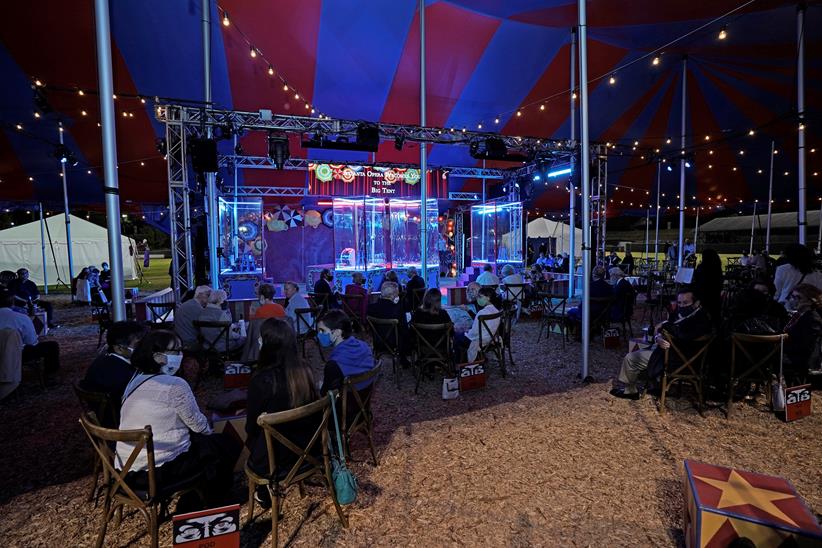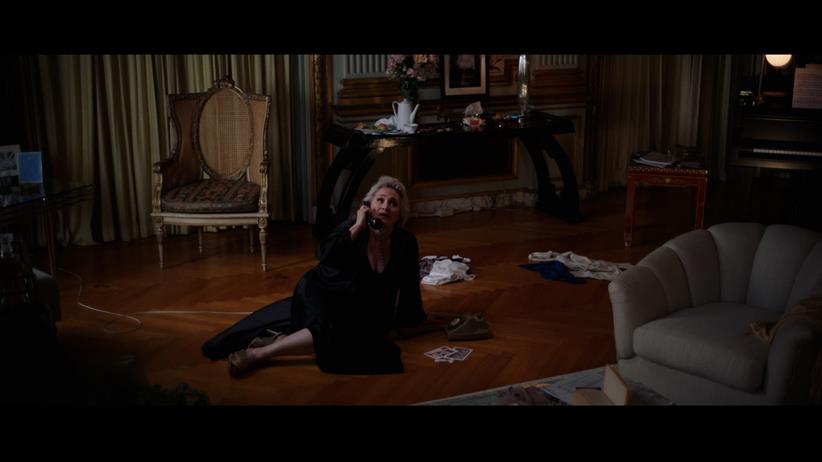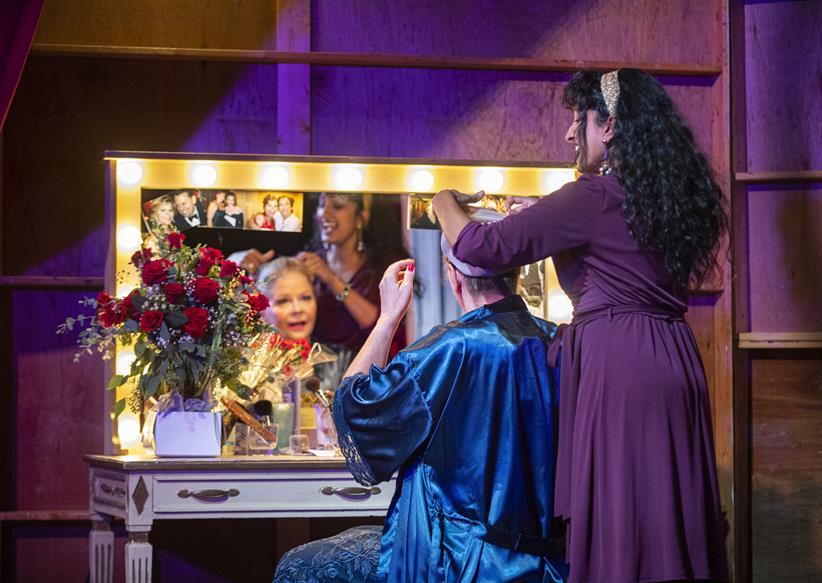Return to Gathering: Back into Theaters
The industry readies itself for the post-pandemic era.
This spring, news began to trickle out about what North American opera companies would do in the fall of 2021. With large-scale vaccination efforts underway, sharply reduced rates of COVID-19 infection and death, and the gradual lifting of capacity restrictions for indoor events, it seemed likely that a return to indoor, in-person performance would be a reality. Michigan Opera Theatre announced early, on March 23; other large companies, such as Houston Grand Opera, Lyric Opera of Chicago, and Washington National Opera, waited until May. As Anthony Freud, general director, president, and CEO of Lyric, which usually announces its season in January, put it: “We delayed announcing the season as long as we could, to reduce the risk of having to make changes afterward.”
Fall plans show a variety of approaches to the return to indoor live performance. In the words of Marc A. Scorca, president and CEO of OPERA America, “The fall is a crescendo.” Lyric Opera of Chicago is opening on September 17 with a new production of Macbeth, long planned as an introduction to the company’s new music director, Enrique Mazzola.
Washington National Opera returns to the stage in November with four performances of a concert of opera scenes featuring a roster of star soloists, plus orchestra, chorus, and members of the company’s young artist program. The company’s first staged event — Written in Stone, a quadruple bill of one-act world-premiere operas — won’t take place until March. “The local authorities for the District of Columbia have been quite conservative [about gathering],” explains Timothy O’Leary, WNO’s general director. “Given the nature of opera, it was best to structure the season so we would be less exposed to possible cancellations, should things not go as we hoped. We stacked the deck so that the staged opera is happening in the spring.”
Boston Lyric Opera, on the other hand, is opening its indoor season in October with Cavalleria rusticana at the Majestic Theatre. As a one-acter, according to Bradley Vernatter, the company’s acting general and artistic director, Cavalleria might be more palatable than a full-length standard to potentially reluctant audience members, while still satisfying the pent-up longing for grand, “red-blooded” opera. In an unorthodox move, however, BLO has decided that rather than cram chorus and orchestra into the Majestic’s limited confines, their parts will be pre-recorded. “This seems like a reasonable and realistic way to reenter the theater and send the message that we are back,” Vernatter says.
Opera Omaha announced its three opera indoor season in mid-April, before most companies had made their plans public. The company’s nimbleness here, according to Roger Weitz, its general director, is partly due to its modest size. “Compared to our colleagues who are struggling to make their venues safe, provide for their hourly-paid, front-line workers, and negotiate with multiple unions, we have more bandwidth for making and changing plans,” he says. “Ordinarily, Opera Omaha would love to have its own opera house, its own full-time orchestra and chorus, and a sizeable percentage of its budget covered by ticket sales; but in this pandemic, those missing attributes have meant we could be more nimble and respond quickly to ever-changing local health conditions.”

Indeed, over the past year and a half, opera company leaders have become experts in contingency planning, ready to change direction as health advisories or other conditions evolve. The companies have assembled blue-ribbon medical advisory panels to ensure safety for performers and audience members alike and have carefully monitored and followed local and state regulations regarding masking, distancing, and capacity= restrictions on venues of all kinds.
“We are prepared for capacity to be low,” says Vernatter. “If we get to 100 percent being permitted by the state and the city, and BLO and [the venue] approve, then OK. But we are not putting pressure on it. We are focusing on having the company and the artists returning to the stage.”
For many general directors, live, in-theater performances represent a “return to gathering” rather than “reopening” or “getting back to normal.” Marc A. Scorca points out that the pandemic, for all its trials, sparked enormous creativity and inventiveness. “In the last year and a half, we have discovered an incredible number of new audiences; opera has become shorter and more casual,” he says. “We’ve used wacky locations and digital platforms; we’ve made opera inexpensive, and unmediated in time and location. We’ve blown up barriers that we struggled with. So, in the fall and winter, will we continue to offer a mix of new and old modalities? How do we bring in-person, in-theater performances back into the mix, rather than just flipping a toggle switch and going back to ‘what we were’?”
Pandemic-era experiments, both live and digital, suggest tantalizing possibilities for the future. Companies that did drive-in shows — such as Michigan Opera Theatre, San Diego Opera, and San Francisco Opera — saw enormous numbers of new-to-file ticket purchasers; companies such as Boston Lyric Opera and Washington National Opera, which took performances out to neighborhoods on trucks, made a lot of new friends. Streaming turned out to be a boon for people who have difficulty going out or prefer to get their entertainment at home.
Opera Philadelphia, which plunged wholeheartedly into the creation of original films and streamed content with its dedicated channel, is selling its 2021–2022 season as a hybrid live and digital package and is using the fall to present new projects created especially for the digital medium. Opera Philadelphia sees this work as an intrinsic part of its artistic identity going forward. “The digital work was not envisioned as a pandemic Band-Aid, but as an opportunity to do different artistic projects,” says David Devan, OP’s general director and president. The fall’s digital offerings will include a film of La voix humaine with Patricia Racette, which was already in the works before the pandemic. The company plans to return to live, indoor performance in January, with a concert rendering of Stravinsky’s Oedipus Rex in Verizon Hall. The show had been slated for January 2021; Devan wanted to employ as many artists as possible and showcase a big orchestra and chorus for the company’s return to the stage. The program will also include George Walker’s Lilacs, an outgrowth of the field’s intensified focus on equity, diversity, and inclusion.

BLO’s 2021–2022 season will include a film of Ana Sokolović’s Svadba, directed by choreographer Shura Baryshnikov and planned for a February release. “Digital is a platform for us to create new works in new ways, without the rigid, limiting environment of our usual ways of making live opera,” Vernatter says. “You can see Cavalleria if you are in Boston for those performance days. Adding film allows us to be a year-round organization, creating work, being active and present, and more responsive to what is happening in the world.”
During the pandemic, Opera San José built a studio and filmed live performances, ranging from Jake Heggie and Gene Scheer’s Three Decembers to a program of New Year’s Eve drinking songs. It is now turning that expansion of opportunity into a central tenet. One factor is its European fest-like structure: Singers stay in town for long periods, living in company-owned apartments. “It doesn’t make sense to utilize them just 24 nights a season,” says Khori Dastoor, the company’s general director. “For a company like ours, with a scrappy budget and, until recently, no endowment, this has opened an incredible door for us to serve our resident artists in a cost-effective way. The drumbeat of what you do every year has totally evaporated. I am letting my artists lead me on this and come to me with projects they feel passionate about. And our patrons are supporting it because of their connection with the artists of the ensemble.”
Dastoor sees revenue potential in OSJ’s new paradigm: Its recent digital endeavors brought the company 1,000 new household ticket buyers and 490 first-time donors. It also boosted revenue by licensing Three Decembers to other companies. The digital studio has meanwhile opened up collaboration potential: OSJ recently partnered with LA Opera, a company many times its size, on a recital of music by Latina composers.

One of the most dramatic collaborations of the pandemic period was the Decameron Opera Coalition — a group of nine small opera companies all over the U.S with little in common other than their interest in new work. Their project Tales from a Safe Place — nine short, commissioned operas, each based on a story from the Decameron — was seen on six continents. The coalition is continuing this season with a second project under the working title Inconvenient Heroes, scheduled for an October release. “Because we are all small, we were able to be nimble and build something while the ground was still shaking,” says Maria Sensi Sellner, artistic and general director of Pittsburgh’s Resonance Works and Decameron’s lead producer. Sellner says that most of the coalition partners are planning live events for fall, and some are planning to integrate the Heroes film with their live performance projects. But the success of Tales gave these small companies an outsized influence that they are not forgetting about.
Opera Omaha, which this past season served as a co-presenter for the VR opera Miranda and the midwestern hub for the PROTOTYPE Festival’s Modulation, will probably fold a digital element into the coming season’s One Festival. “The pandemic opened our eyes to the possibilities of digital to enhance everything we do,” says Weitz. Still, like many administrators, he stresses that the opportunities offered by new modalities of performance are in no way intended to replace live performance.
“We’ve all become film producers; the question now is, what do we do with it?” asks WNO’s O’Leary. “We use it according to its capability to further our mission, but it will never replace the live experience. What this year has taught us is the value proposition is in the live experience, in our proximity to one another and to the performers. There is something about the collective energy of an audience and performers, which we have known since the start of theater. It matters.”
As live performance gradually returns, its specialness may take on new meaning. David Devan thinks that more curation may be necessary for the future. “We’re not going back to the way it was, but we don’t know what it’s going to be,” he says. “I think there will be less frequency of purchase, and people will make sure that if they are spending, it is worth the time and the
money. As artistic organizations, we are not in the business of guaranteeing that everything is fantastic. The idea of a festival is a good foil for that — we are selling an adventure — but for the regular season, you are selling excellence, and our ideas of excellence need to be more selective. Perhaps we have to do a little less. The good thing about coming out of this experience is that we can interrogate our practice, and not do the things that weren’t working anymore.”
This article was published in the Summer 2021 issue of Opera America Magazine.

Heidi Waleson
Heidi Waleson is The Wall Street Journal’s opera critic and the author of Mad Scenes and Exit Arias: The Death of New York City Opera and the Future of Opera in America.






